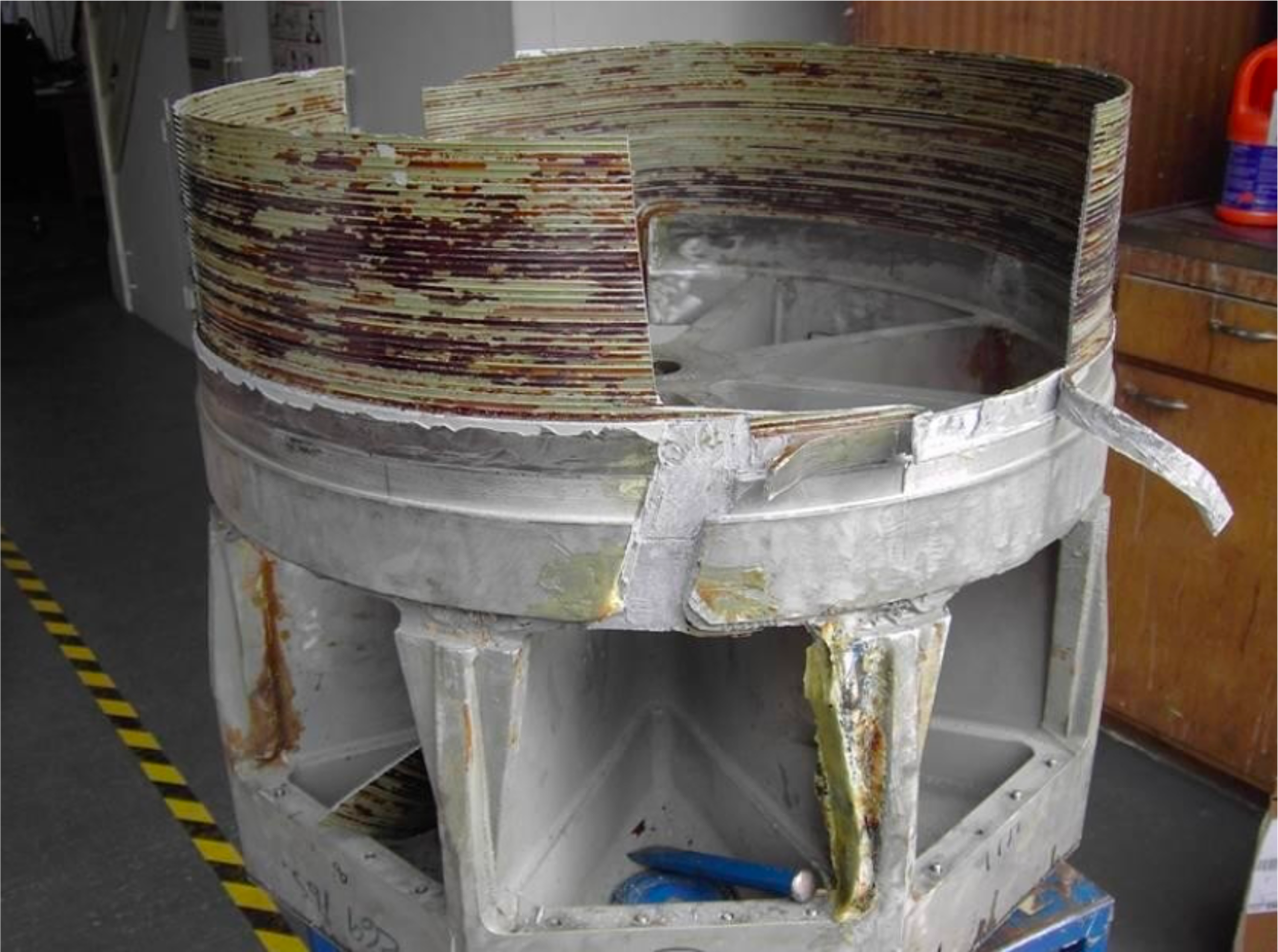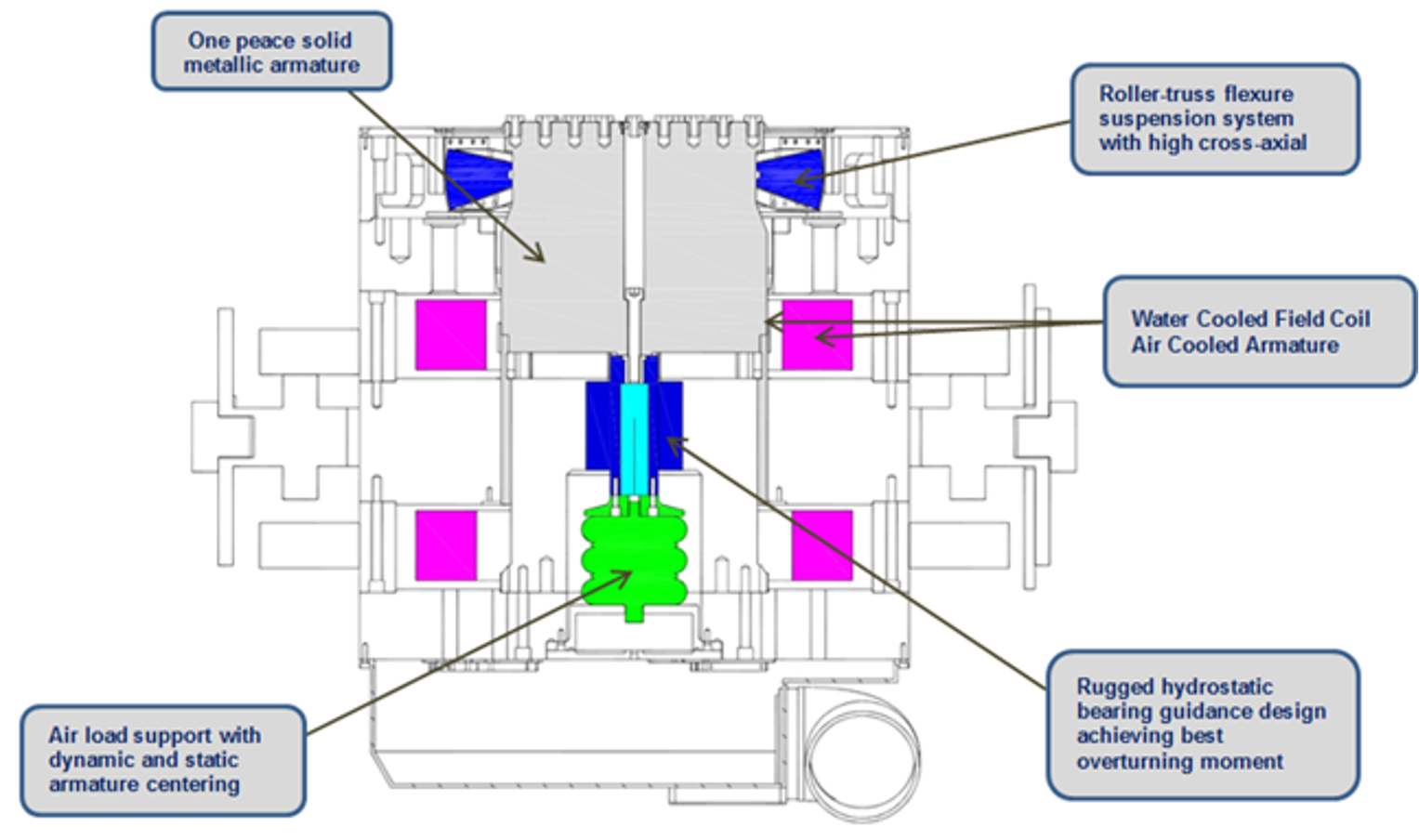Most high force direct coupled armature utilize an armature construction design of electrical windings, epoxy bonded joints, high amperage flexures (direct input power to the coil), and high pressure hoses to cool the windings (cooling water in and out of the coil).
Each of these components is subjected to the same vibration and/or shock levels applied to the test specimen.
Repeated high level operation can lead to:
fatigue failures,
water leaks,
cracked epoxy joints,
burned out windings, or
voltage breakdown in the coil.
Typical shaker lower guidance is usually a configuration of rollers or shaft housing with small ball bearing composite assembly. Such design is usually sufficient to handle low to medium force shaker where the test articles are usually of moderate weight and size.
The high force shaker (>70kN typically) vibration testing system is unable to handle larger test article and mass. The CG of such test articles cannot be easily controlled which can result in high overturning moment and causes great stress to the ball bearing assembly.
At certain instances, failures can occur to the extent of damaging the armature and the stator coil where the lower guidance breakdown. The hydrostatic bearing that is incorporated in I series shaker system is designed to handle 9000Nm side loading.
The superb bearing design is capable to extend greater test capabilities and make the shaker system much more reliable.



